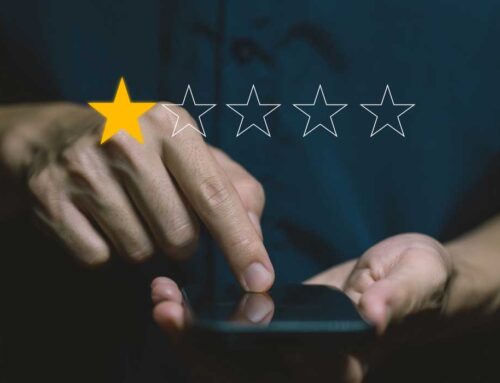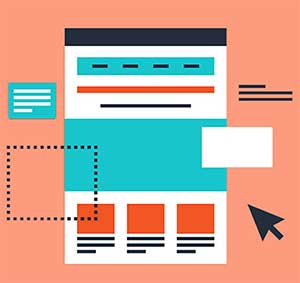Landing pages are the most important part of any website. They’re not only the first impression for the website, but also help to accomplish very specific goals — from building brand awareness, to getting more subscribers, to actual product sales.
Research shows that the more landing pages a website has, the more likely it is to accomplish these goals. For instance, companies with 10 to 15 landing pages increase leads by 55%.
Similarly, companies with 40 or more landing pages get 12 times as many leads as those with 5 landing pages or less.
In this article you will find out:
- What is a landing page and why you actually need to create one
- Best practices to make sure you create a high-performing landing page
What Is A Landing Page?
A landing page is a page that’s distinct from the rest of your website and has been created for a very specific purpose. Or, simply a page detached from your main website (completely different URL – which may even be recommended in some cases) which is used, again, for a very specific purpose.
Most marketing campaigns have special landing pages that are designed keeping in mind the objective of the campaign. For instance, if your campaign objective is to get more subscribers, your landing page — from the copy, to the design elements, to the layout — should keep the ultimate objective in mind. Or if it’s to sell a particular product or service, then everything should be directed at doing just that.
The example below is from Yellow Pages, and shows you exactly what a focused landing page looks like:
Why You Need to Create A Landing Page
48% of marketers design landing pages for every marketing campaign. There are some major reasons why landing pages are so popular.
Single-minded focus
Let’s say you want to increase subscribers to your blog. You may think that your blog itself is enough and you don’t need a distinct landing page, but that is simply not true. Your blog may have multiple objectives. These include highlighting popular posts, recommending affiliate products, and gathering email subscribers, etc. A landing page, on the other hand, will be completely geared towards just one objective. This increases the chances of actually achieving that objective.
Great first impression
The landing page is a user’s first impression of your company. It’s the first thing they will see when they click-through from a marketing campaign. If you design a landing page keeping your campaign’s objective(s) in mind, it’s much easier to meet user expectations and create a seamless experience.
Landing Page Best Practices
In order to create a high-converting landing page, there are certain best practices that can really enhance effectiveness.
Define Your Target Audience
This is the first step to designing a high-performing landing page. In fact, defining your target audience correctly can increase landing page conversions by up to 300%. Create buyer personas for your marketing campaign and try to make them as detailed as possible. This includes things like income, background, education, location, and so on. The better you know your target audience, the more likely you are to create a landing page that works for them.
Define Your Goal & Main Purpose
This is the most critical aspect of creating a high-performing landing page. That’s because the strength of a landing page lies in its singularity of purpose. Landing pages are aligned completely towards serving just one goal. That goal can vary from increased brand awareness, to more subscribers and enhanced product sales. Yet, campaigns and their landing pages work best when you’re just pursuing one big goal at a time. So, make sure you have clarity on that before you get started.
Create Action-Oriented Copy
The major objective of any landing page is to get a user to take action. This could be subscribing to an email list, filling a lead generation form, or buying a product or service. The entire copy of your landing page needs to be oriented towards compelling the user to take this action. This includes things like putting general important information first (if you’re doing a long copy page or a long video, then you may want to hold some of the details back until the end), explaining features such as benefits, and formatting text in a scannable way. You also need to craft simple, direct sentences and use the language that your audience uses.
Easy Navigation
While a seamless user experience matters for any website, it’s especially crucial for a landing page. A key aspect of user experience is the ease of navigation. Make sure your landing page has an easy navigation bar (if any) that makes it extremely easy to go through the page.
Make Your CTA Visible with Contrasting Colors
The CTA (Call to Action) buttons are one of the most critical elements of your landing page. You need to make sure your CTA is designed in a way that makes people reach out instantly. Using contrasting colors and CTA buttons that stand out will go a long way in getting those conversions. Your button copy must be compelling, and of course it must be complemented with the page elements and page copy as well.
Use Images and Videos
Did you know that visual elements like images, videos, and graphics (if done right) can go a long way in compelling users to take action? In fact, according to this article, 40% of people respond better to visual elements vs text-based information. Using compelling images and videos should contribute to an improved user experience. However, keep in mind that every element on the landing page should be focused on the overall objective. This goes for visual elements like images, videos, and infographics as well.
Prepare A Short Questionnaire
Make sure that the form on the lead generation page has the minimum number of fields. Only ask for information that you absolutely must know. The faster the user can complete the form the more conversions you are likely to receive.
Keep It Simple
The oft-neglected key to designing effective landing pages is simplicity. Strive to keep your copy, layout, and design elements as clean and simple as possible. Adding complexity to your landing page detracts from the sole focus. The simpler you can keep things, the better your chances for conversion.
Testing
44% of companies use A/B testing to improve the effectiveness of their landing pages. A/B testing allows you to test two pages simultaneously. These pages will be identical in every respect except one, and that’s the change you are testing. You can keep conducting A/B tests for different copy and design elements until you arrive at the one that works best. If you think A/B testing is a waste of your time, then take a leaf out of Barack Obama’s book. His campaign managed to raise an additional $60 million through the power of A/B testing.
Extra: A Quick Word on Marketing Funnels
Affiliate marketers, as well as internet marketers in general may also find this section useful.
A standard funnel begins with some form of advertisement. This is your bait or your tripwire. This can be as basic as a headline and text, with a button to lure people to your landing page. It can be a paid advertisement on Facebook or Google, or a link in the description of a YouTube video, etc.
That ad should then take the lead to an email capture page, which will offer them something free in exchange for their email, and/or prepare them for the landing page. They only get access to the landing page, and what you’ve promised, if they submit their email.
Note: make sure your tripwire, email capture page, and landing page all have a consistent message. For example, the landing page has a video which tells them about how to make money, the email capture page grants them access to the video, and the tripwire ad alludes to learning this knowledge of how to make money. Why is an email capture page important? Because if you can successfully get an email, then you’ll have that email to market to for life (unless of course they unsubscribe).
Next, of course, is your main landing page. This can be all text, but a well-made centerpiece video can really make a huge difference. Here, you deliver on your promises, such as giving them something of value for free just for visiting your page/putting in their email, and offer them a low-cost entry item, with perhaps a couple one-click upsells. Why low cost? Because, as Russel Brunson has pointed out, the point of your funnel is to capture their email and break-even on your marketing costs. You want to make it as easy as possible for them to give you their email address, and so you’re willing to aim for simply breaking even on your marketing costs.
So how do you make money? The funnel is all front-end, the real money comes in the back-end. This is through premium priced offers, repeat customers, and subscriptions. Which is why it’s so important to capture their email address (and tag them appropriately), so you can market these things to them over and over again.
A company should consider whether or not they have a value ladder. A value ladder is a tiered layout of products and services beginning from the least valuable (such as your free or low-priced bait), to higher and higher items (such as events, premium products, subscriptions, etc.). As a person enters into your company via the free or low-priced item, you gradually move them up your value ladder. This is what many big companies do to be so successful, like Apple, for example.
Now of course, not all companies need to follow this pattern, they may only sell high-priced items, or they may only sell items that they know will sell in mass. And that’s fine. But if you’re an internet-based business, and you want to maximize your profits, you should consider this marketing funnel approach.
Your landing page is going to be just one of multiple important pieces in your marketing funnel.
Conclusion:
At the end of the day, landing pages are the last and most crucial step of any marketing campaign. Only 22% of businesses are currently satisfied with their conversion rates. If you’re one of the unsatisfied, follow these tips to create landing pages that will dramatically improve conversions.
Author Bio: Pawel Tomczyk, and I’m a marketer of 7 years. I enjoy science fiction books, and anything related to blockchain, fintech, and technology in general. In 2016 I founded Cyberius, a creative agency.

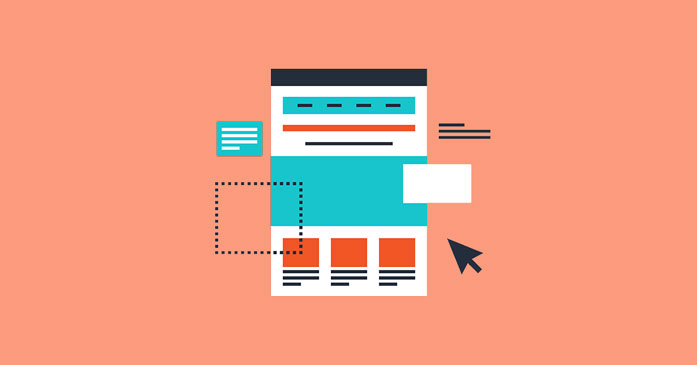
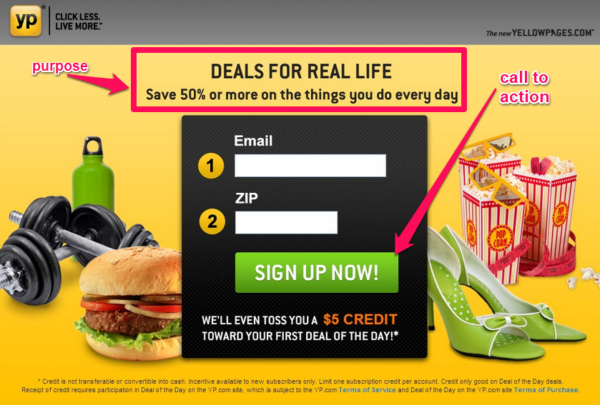
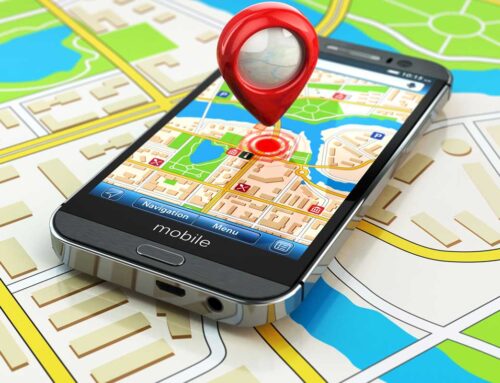

![How to Write a Professional Chiropractic Bio [Template Included]](https://propelyourcompany.com/wp-content/uploads/write-a-bio-500x383.jpg)
